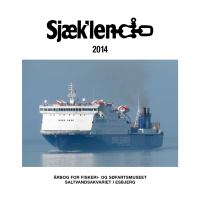

17.
Kinze, C. C.: op. cit.,
Siden Saxo
: 1, Jan. Kvt., 16. Årg.,
1999, p. 2-6.
18.
Kinze, C. C.: Blåhval
(Balaenoptera musculus
Linna-
eus
, 1758), Baagøe, H. J., Jensen, T. S. (red.):
Dansk Pat-
tedyratlas
, Gyldendalske Boghandel, Nordisk Forlag A/S,
København, 2007, p. 306-307. Kinze, C. C.: Havpattedyr,
Sand-Jensen, K. (red.):
Naturen i Danmark Havet
, Gylden-
dalske Boghandel, Nordisk Forlag A/S, København, 2006,
p. 326-327.
19.
Kinze, C. C.:
Havpattedyr i Nordatlanten
, Gads forlag,
2001, p. 136-140. Sears, R.: Blue Whale,
Balaenoptera
musculus
, Perrin, W. F., Würsig, B., Thewissen, J. G. M.
(red.):
Encyclopedia of Marine Mammals
, p.112-116.
20.
Teglbjærg, T.:
Hvaler på afveje – Hvalfangster og hval-
strandinger i Vejle Fjord i perioden 1800-2010
, Byhistorisk
Forlag, Vejle, 2012.
21.
Jensen, J. V.: Hvalen og de Haderslev-Fiskere,
Politiken
,
4/12 1931.
22.
Geraci, J. R., Lounsbury, V. J.:
Marine Mammals Asho-
re, A Field Guide for Strandings
, National Aquarium in Bal-
timore, Inc, 2005.
23.
Redskab med langt skaft og krog, hvormed man hentede
tabte spande o.a. op af brønden.
24.
Holbæk Amts Avis
den 27/4 1863
.
Venligst affotografe-
ret af Holbæk Stadsarkiv.
25.
Hvalen fik ikke fred til at dø,
Jyske Vestkysten
den 17/6
2010. Tekst: RB. Foto: SCANPIX.
26.
Sørensen, H. L. (red.):op. cit., Naturstyrelsen, 2012.
27.
Hvalen,
Vejle Socialdemokrat
6/4 1905.
28.
Teglbjærg, T.: op. cit., Byhistorisk Forlag, Vejle, 2012.
29.
Stor international interesse for de døde hvaler,
Jyske Vest-
kysten
29/3 1996
.
Tekst: Uwe Iwersen. Foto: Lis Eeg Sylvest.
Summary
In autumn 2014, the exhibition
“Off Course whales – Strand-
ings in Denmark through the ages”
opened at the Fisheries
and Maritime Museum. The occasion for the exhibition was
the opportunity to exhibit skeletons from a minke whale
(
Balaenoptera acutorostrata
) and a pilot whale (
Globiceph-
ala melas
), both stranded in the summer of 2012. The pur-
pose of the exhibition was to give visitors in the museum an
insight into whale strandings in Denmark through the ages
- to tell how many whales have stranded in Denmark from
1901 to 2014, how great the diversity is among the stranded
whales, what happens when whales strand along the coast-
line, and how the press has covered the whale strandings
through time.
When whales strand in Denmark, the national stranding
network moves out. The stranding network is run jointly
by the Danish Nature Agency, the Fisheries and Maritime
Museum in Esbjerg, the Natural History Museum of Den-
mark, the Zoological Museum in Copenhagen, and DTU
Vet National Veterinary Institute. An important part of the
stranding network’s tasks is to gather tissue samples, skel-
etal remains and scientific measurements in order to se-
cure samples for future research projects. The aim of the
veterinarian’s work is to try to identify the cause of death
and stranding. The last time the stranding network had a
demanding task was when two sperm whales (
Physeter mi-
crocephalus
) stranded on the beach near Henne on the west
coast of Jutland in February 2014.
Whale strandings are spectacular events. They have
therefore been documented for centuries. From 1901 to
2014, 22 different cetaceans have stranded in Denmark.
Most frequently stranded are the harbour porpoise (
Phoc-
oena phocoena
) and the white-beaked dolphin (
Lageno-
rhynchus albirostris
), which are considered residential
species. Of very rare species, Bryde’s whale (
Balaenoptera
brydei
), the narwhal (
Monodon monoceros
) and the pygmy
killer whale (
Feresa attenuate
) can be mentioned.
Whale strandings have great novelty, and the press has
therefore published many reports on stranded whales over
the years. In the exhibition, the oldest report is from 1725. It
is a song accompanied by a drawing of the stranded whale,
which in the drawing looks more like a fish than a whale.
By comparison, present-day articles on whale strandings
deal with e.g. how stranded whales can be used for research
purposes.
Kaskelot ved Henne Strand, februar 2014. Foto: Torkil Michelsen. >
151









